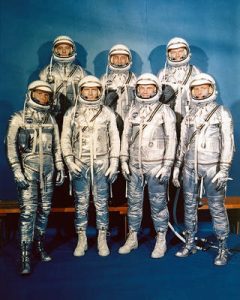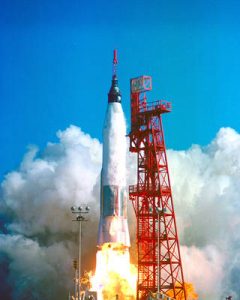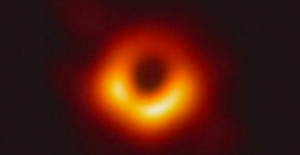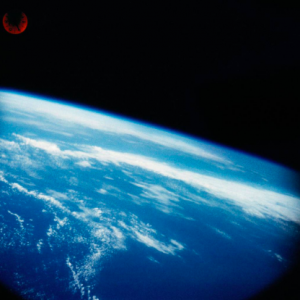What was Project Mercury?
Project Mercury was the first set of American spaceflights that sent man into space. Consisting of six spaceflights, two of which broke Earth’s atmosphere and immediately descended, and another four which entered Earth’s orbit and circled the planet. Through these missions, Project Mercury showcased humanity’s ability to navigate space and in the process inspired all subsequent space missions. By sending missions into space between 1961 and 1963, Project Mercury allowed for scientists and astronomers to test and overcome the boundaries of sending humans into space, benefitting future astronauts and fuelling missions to the moon in 1969. By sending man into space, we were able to enhance our current knowledge on planetary astronomy by achieving a perspective that a telescope couldn’t provide.
Expected Boundaries and how Astronomers Exceeded them
Escaping Earth’s Atmosphere
A major barrier faced when attempting to exit the atmosphere, is the challenge of breaking the gravitational pull of

Source – NASA (https://www.nasa.gov/audience/forstudents/5-8/features/nasa-knows/what-was-project-mercury-58.html)
Earth. To achieve this, the spacecraft must reach escape velocity at 11 kilometres per second, which is the necessary speed needed for an object to escape Earth’s gravitational pull and enter the planet’s orbit. Going at this speed comes with additional barriers, including a requirement for large amounts of fuel and the intense heat that accompanies speeds this high. To compensate for the added weight of the fuel, more thrust is required, however, to increase thrust you need more fuel. It is a never ending cycle the scientists continue to struggle with today.
Combatting Extreme Friction and Temperatures
The dangers and challenges of constructing a spacecraft capable of withstanding the friction experienced during the exit and re-entry of Earth’s atmosphere. In order for manned space flights to safely move between our atmosphere, the space-craft must be properly equipped to endure both the journey and the harsh environments of space. The design had a one man capacity, was cone-shaped, weighing 2300-3000 pounds, an escape tower for emergencies, and a booster rocket at the base. With shuttles experiencing temperatures of up to 3000 degrees Fahrenheit, astronomers and engineers had to design the spacecraft with capabilities of withstanding this extreme heat. To combat this heat, a heat shield was created out of silica fibres made by high-grade sand and then coated in black glass. Silica fibres are ideal for protecting from high temperatures as they are an insulator, allowing for the heat to slowly disperse through the material and maintaining the heat at a low 350 degrees. It is because of this heat shield that the inside of the spacecraft does not create an oven-like effect, cooking the passenger, and also prevents the external aspect of the shuttle from burning up.
Muscle Atrophy upon Re-entry
In space, there is an obvious lack of gravity that is dramatized in movies to appear wondrous, however the side effects experienced after returning to earth are nothing to be envied. The human body, when under the pressure of gravity, uses a category of muscles commonly known as the antigravity muscles, to combat the force. However, upon breaking through the atmosphere and entering orbit, gravity is no longer a factor and the astronaut is essentially in a weightless environment where these antigravity muscles are no longer necessary. It is understood that when a muscle isn’t used regularly, it slowly deteriorates and weakens through a process called atrophy. When sending man into space and having them return safely, this was something astronomers and scientists had to be wary of. Research has shown that astronauts on missions lasting from five to 11 days will experience a maximum of 20% muscle atrophy. In the case of Project Mercury, there were six missions, making a total of just under 54 hours flight time. While this may not have been enough time spent outside of Earth’s gravitational pull to experience severe muscle atrophy, the Project Mercury astronauts were able to give future scientists insight on the potential risk for longer missions, allowing for future preparations. Today, NASA has implemented important steps towards combating muscle atrophy in space by mandating that astronauts on the International Space Station must complete a minimum of 2.5 hours of exercise per day.

Source – NASA (https://www.nasa.gov/audience/forstudents/5-8/features/nasa-knows/what-was-project-mercury-58.html)
Pushing Humanities Ability to Explore Space
Breathing outside of our Atmosphere
The human body is not equipped to survive in space, therefore, sending man into space poses many risks to immediate and delayed personal health. An immediate risk that was prepared for was the accessibility of breathable air. To account for this life support for the passenger, consisting of three oxygen tanks, lithium-hydroxide canisters to eliminate carbon dioxide, cooling mechanisms to circulate cabin air, insulation and double-walls to protect from harsh external temperatures, and an on-person pressure suit and helmet for protection from cabin-depressurization. With Project Mercury missions being short in duration and only caring one passenger per mission, the amount of oxygen required was much lower in this case than would be required for longer and multi-passenger missions. Through research it has been discovered that on average, humans require approximately 50 litre of pure oxygen per hour when wearing a spacesuit and with each tank holding about 800 litres of oxygen we can assume that one tank will provide sufficient oxygen for over 16 hours. While this information can be used for short-term, longer missions cannot simply bring more oxygen as the weight of the canisters would exceed the space-crafts possible thrust. From here, astronomers and scientists began looking for the solution, eventually landing on a process known as electrolysis. Electrolysis is a process by which external solar panels collect electricity and this is then used to separate water from its combined state, into distinct molecules of hydrogen gas and oxygen gas. This method of providing oxygen to astronauts is utilized on the International Space Station, allowing passengers to have a consistent flow of oxygen; in addition to a supply of sugars created by the leftover hydrogen particles. Project Mercury did not require this level of oxygen, so it is because of these space flights that scientists began to think further into the issue, eventually discovering this monumental solution. This is one of many discoveries made during this time; another thing pushed into momentum by space travel was the creation of NASA.

Source – NASA (https://www.jpl.nasa.gov/edu/news/2019/4/19/how-scientists-captured-the-first-image-of-a-black-hole/)
Creation of NASA
To be the first country to send man into space would be a great accomplishment and with America and the Soviet Union both working towards this, a ‘Space Race’ was initiated. The Soviet Union successfully launched a satellite, ‘Sputnik’, into orbit in 1957. Approximately the size of a beach ball, weighing in at 183.9 pounds, Sputnik caught worldwide attention and set a precedent of what was possible. This was monumental as Sputnik became the first man-made satellite to orbit the Earth, with its purpose being only a radio transmitter, it put the Soviet Union at a large advantage. It was this competition and lead set by the Soviet Union that largely pushed the creation of the National Aeronautics and Space Administration (NASA) into action.
Knowledge Acquisition of Planetary Astronomy
Understanding the Limits of the Human Body in Space
Although the Soviet Union won the race to send a man into space, the field of manned space missions was still largely unexplored. The human body is quite complex in the means of what it requires to thrive and what it can withstand within any particular environment. Sending man into space in theory is quite complicated and dangerous due to the vast range of variables that can go wrong, therefore placing said person in danger. Project Mercury allowed scientists and physicians the ability to monitor and observe how the human body reacts to life in space. The personal qualifications for being eligible to partake in these missions, required that the person be healthy, between 35 and 40, and under the height of 5 foot 11 inches. During the missions, astronauts wore 20 pound spacesuits to protect from exterior environments and also to monitor the heart rate, body temperature, and breathing rate. Upon reaching space and entering orbit, a decrease in weight and heart rate was observed, however this was later discovered to be a result of prolonged time spent in the spacesuit, not due to the time spent in weightlessness. Project Mercury proved that humans can survive and function in a space environment for longer than a day and that the predictions and preparations made prior to launching were accurate and successful.
Fuelling Missions to the Moon
Despite NASA’s inability to send the first man into space, the ‘space race’ and Project Mercury’s success fuelled America’s victory to have the first man to walk on the moon. The 7 astronauts who participated in the Project Mercury missions were selected within 6 months of Nasa’s creation, showing the importance of these men in the project’s success. Alan Shepard became the first American astronaut to enter space in Project Mercury’s initial suborbital mission. The 15-minute flight reached space and immediately descended, this brief mission ignited Shepard’s passion for space travel, eventually leading him to become commander of the Apollo 14 mission where he was able to step foot on the moon. While Shepard had the privilege of entering space on two separate occasions and continued to work as the head of the Astronaut office, he was not the first to walk the lunar terrain. During John F. Kennedy’s time in presidential office, NASA’s plan was to have two men walk on the moon under the 11th Apollo mission 20. Departing on July 16, 1969, Neil Armstrong, Edwin Aldrin, and Michael Collins left Earth with the moon being their next destination. Collins remained within the moons orbit to conduct experiments and capture ground-breaking images, while Armstrong and Aldrin made history upon stepping foot on the moon. The famous quote by Armstrong was uttered here, upon his first steps on the moon, “That’s one small step for a man, one giant leap for mankind”. This giant leap would not have been possible had Project Mercury not been so successful in the innovation of space-travel, the knowledge acquired through the seven missions carries on to all subsequent missions.
Exceeding a Ground Perspective
At one point in the history of astronomy, the knowledge held about the universe was so minimal that we believed the Earth was the centre and everything rotated around us. This was great astronomer Ptolemy’s theory of the geocentric universe and society placed heavy belief on this for centuries. Prior to the invention of the telescope in 1608, the depths of the universe could only be estimated as far as the eye could see. Following this invention, the Milky Way was uncovered, as the high magnification scope amplified the night sky, revealing stars, planets, and a clearer image of the moon. However, all great astronomer alike would not be satisfied with this discovery and would follow their curiosity to wonder, what else is out there? With satellites having entered Earth’s orbit and capturing pictures before man, it can be assumed that a picture can only do so much justice to the wonders of our universe. The bare human eye laying view on our planet provided a perspective unlike any other, while it can only see so far, this view from space is far more advanced than that of on Earth. It is with recognition to Project Mercury that we can thank for some of the greatest images of the universe available.
Gratitude for Project Mercury

Source – NASA (https://www.nasa.gov/mission_pages/mercury/mercury_gallery.html)
The Project Mercury missions set a precedent for all future space exploration through the success and innovation of man accompanied space travel, by inspiring further astronomers, astronauts, and scientists alike to persevere past the challenges and reap the rewards.The boundaries of human accompanied space travel came with risks to the astronauts as the effects of space on the human body were otherwise unknown. The preparations made by those behind the scenes of Project Mercury proved to be successful, keeping the passengers safe and paving the way for future explorations. Prior to these missions, humanities ability to be in a space environment and withstand the conditions were unknown, however with the success of the suborbital and longer missions proved that it was not only possible, but that the limits could be pushed further. Without these missions, man would not have walked on the moon within the same century and would not be making plans to walk on Mars in the upcoming century. Our knowledge of planetary astronomy has been expanded to the point where we can make educated estimates on the depths of the universe and push our search for knowledge in other directions, such as the first image of a black hole, etc. Project Mercury has inspired, innovated, and illuminated the wonders of space, pushing boundaries of what was thought possible and creating a space where the limits are only as far as you can imagine them.